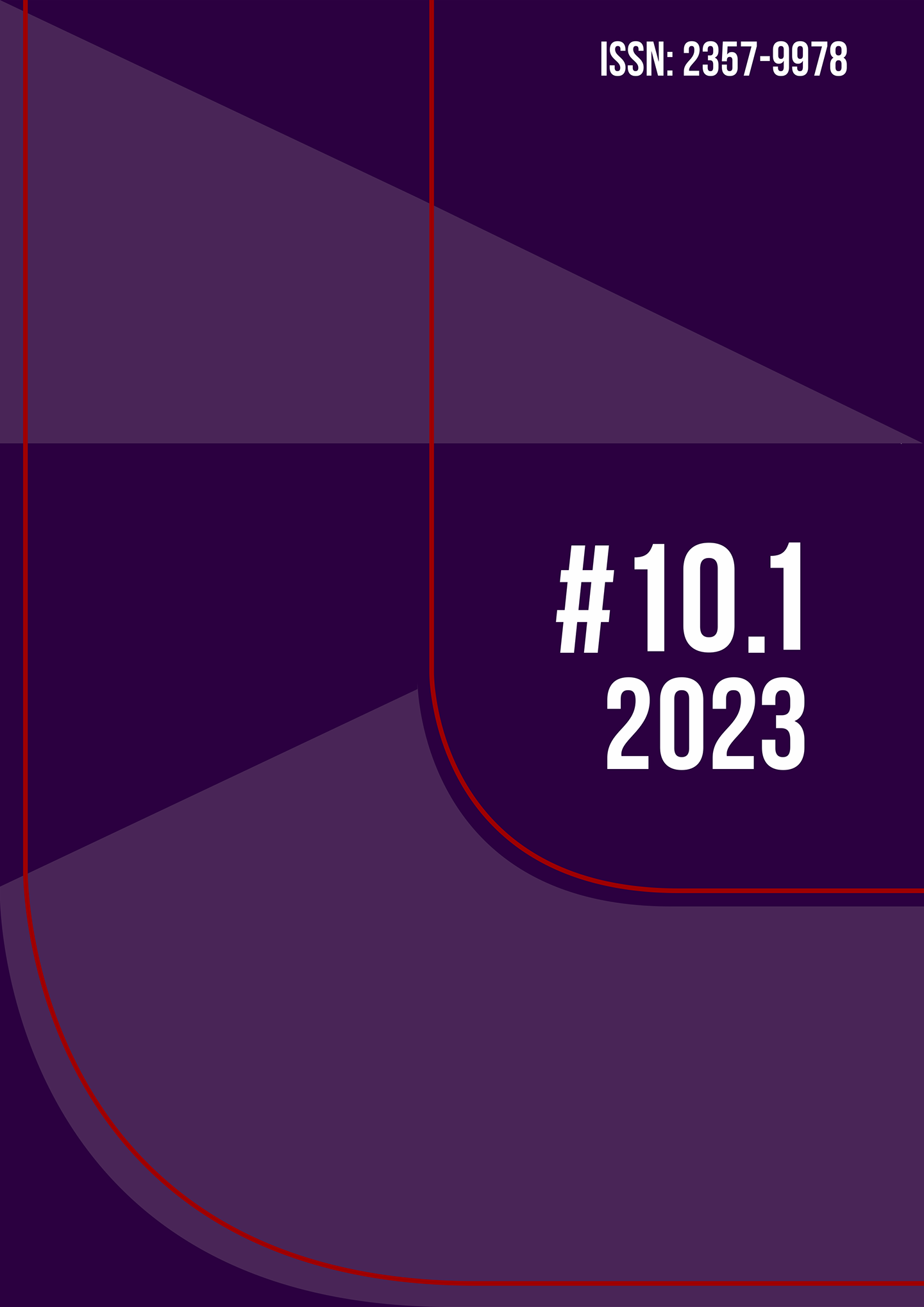Canto e gesto: considerações sobre a estética vocal na performance de polifonia sacra medieval
DOI:
https://doi.org/10.36025/arj.v10i1.31801Palavras-chave:
Idade Média, polifonia, tradição oral, música antiga, vozResumo
O movimento de música antiga se baseia mormente na análise de registros documentais do passado (partituras, tratados, relatos históricos, etc.) para suas reconstituições. Porém, restam as lacunas causadas pela falta de continuidade de uma tradição oral – afinal, nem todos os elementos da performance estão contidos nas partituras. Portanto, para preencher essas lacunas, o performador do presente precisa tomar certas decisões – e nem sempre o faz de acordo com os critérios mais objetivos. O artigo discute algumas das decisões dos músicos historicamente informados no que concerne à técnica vocal utilizada na interpretação moderna de polifonia sacra medieval, e propõe uma nova hipótese a esse respeito, com o auxílio da iconografia e do repertório popular de tradição oral.
Downloads
Referências
BACHMANN, Werner. Probleme musikikonographischer Forschung und der Edition von Bildquellen. In: HEARTZ, Daniel; WADE, Bonnie (org.). International Musicological Society: report of the Twelft Congress, Berkeley, 1977. Kassel: 1981, p. 825-827.
BENT, Margareth. Impossible Authenticities. Il Saggiatore Musicale, v. 8, n. 1, p. 39-50, 2001.
BERTHOLD, Dana. Tidy Whiteness: A Genealogy of Race, Purity and Higiene. Ethics and Environment, v. 15, n. 1, p. 1-26, 2010.
CARR, Edward H. O que é história? Rio de Janeiro: Paz e Terra, 1996.
DELL, Helen. “[A] single, true, certain authenticity”: The authenticity wars in English twentieth-century folk and medieval music revivals. Postmedieval: a journal of medieval cultural studies, v.10, p. 439-451, 2019.
GALLO, Pierluigi. Il ‘Miserere’ polivocale di Sessa Aurunca. In: ARCANGELI, Piero (org.). Musica e liturgia nella Cultura Mediterranea, Quaderni della Rivista Italiana di Musicologia, v. 20, 1988, p. 69-94.
GREIG, Donald. Sight-Readings: notes on a cappella Performance Practice. Early Music, v. 23, n. 1, p. 125-148, 1995.
HAINES, John. The Arabic Style of Performing Medieval Music. Early Music, v. 29, n. 3, p. 369-378, 2001.
HAYNES, Bruce. The End of Early Music: A Period Performer’s History of Music for the Twenty-First Century. Oxford: Oxford University Press, 2007.
HUGHES, Andrew. Charlemagne’s Chant or The Great Vocal Shift. Speculum, v. 77, p. 1069-1106, 2002.
JACKSON, Roland. Performance Practice: A Dictionary-Guide for Musicians. New York: Routledge, 2005.
KIRKMAN, Andrew. Early Polyphony Masses. Early Music, v. 25, n. 2, p. 321-322, 1997.
KOZINN, Allan. Machaut: Motets. New York Times, June 13, 2004, p. AR38. Disponível em: https://www.nytimes.com/2004/06/13/arts/recordings-how-to-keep-the-grit-in-earthy-music-903485.html. Acesso em: 12 jun. 2022.
KUIJKEN, Barthold. The Notation is Not the Music: Reflections on Early Music Practice and Performance. Bloomington: Indiana University Press, 2013.
LACAVALERIE, Xavier; PÉRÈS, Marcel. Le Chant de la mémoire: Ensemble Organum (1982-2002), Paris : Desclée de Brouwer, 2002.
LEYDI, Roberto. Canti popolari italiani. Milano: Mondadori, 1973.
MARCHESIN, Isabelle. L’Image organum: la représentation de la musique dans les psautiers médiévaux 800-1200. Turnhout: Brepols Publishers, 2000.
MARINI, Giovanna. Quattro riflessioni sul canto popolare. Forum Italicum, v. 49, n. 2, p. 624-637, 2015.
MARSHALL, Melanie. Voce Bianca: Purity and Whiteness in British Early Music. Women and Music: A Journal of Gender and Culture, v. 19, p. 36-44, 2015.
McKINNON, James. Iconography. In: HOLOMAN, D. Kern; PALISCA, Claude V. (org.). Musicology in the 80s: Methods, Goals, Opportunities. New York: Da Capo Press, 1982, p. 79-93.
MEYER, Christian. Polyphonies médiévales et tradition orale. Cahiers d’ethnomusicologie, v. 6, p. 99-117, 1993.
MICHAEL, Michael A..The Harnhulle Psalter-Hours: An Early Fourteenth-Century English Illuminated Manuscript at Downside Abbey. Journal of the British Archaeological Association, v. 135, n. 1, p. 81-99, 1981.
PAGE, Christopher. An English motet of the 14th century in performance: two contemporary images. Early Music, v. 25, p. 7-32, 1997.
PAGE, Christopher. The English a cappella renaissance. Early Music, v. 21, p. 453-471, 1993.
PAGE, Christopher. The performance of Ars Antiqua motets. Early Music, v. 16, n. 2, p. 147-164, 1988.
PARK, David. A new interpretation of a Magi scene on a Romanesque ivory comb. Journal of the British Archaeological Association, v. 134, p. 29-30, 1981.
PEARSALL, Derek; SCOTT, Kathleen. Piers Plowman: a facsimile of Bodleian Library, Oxford, MS Douce 104. Cambridge: D. S. Brewer, 1992.
PÉRÈS, Marcel. L’interprétation des polyphonies vocales du XIIe s. et les limites de la paléographie et de la sémiologie. Actes des journées musicologiques de Poitiers. 9-10 mai 1986. Cahiers de civilisation médiévale: La notation des musiques polyphoniques au Xie-XIIIe siècles, n. 122, p. 169-178, 1988.
PLANCHART, Alejandro Enrique, The Performance of Early Music in America. The Journal of Musicology, v. 1, p. 19-28, 1982.
RICCI, Antonello. Quelques aspects du chant polyphonique traditionnel en Calabre. Cahiers d’ethnomusicologie, v. 6, p. 87-98, 1993.
ROKSETH, Yvonne. Polyphonies du XIIIe siècle: Le manuscrit H 196 de la Faculté de Médecine de Montpellier. Tome IV: Études et commentaires. Paris: Éditions de L’Oyseau-Lyre,1939.
SACHS, Curt. Primitive and Medieval Music: A Parallel. Journal of the American Musicological Society, v. 13, p. 43-49, 1960.
SALMEN, Walter. The Value of Iconographical Sources in Musical Research. In: OLLESON, Edward (org.). Modern Musical Scholarship. Oxford: Oriel Press,1980, p. 206-214.
SHERMAN, Bernard D. Inside Early Music: Conversations with Performers. Oxford: Oxford University Press, 1997.
TARUSKIN, Richard. The Authenticity Movement Can Become a Positivistic Purgatory, Literalistic and Dehumanizing. Early Music, v. 12, n. 1, p. 3-12, 1984.
TARUSKIN, Richard. The Pastness of the Present and the Presence of the Past. In: KENYON, Nicholas (org.). Anthenticity and Early Music: a Symposium. Oxford: Oxford University Press, 1988, p. 137-210.
WINTERNITZ, Emanuel. The Visual Arts as a source for the Historian of Music. In: Musical Instruments and Their Symbolism in Western Art. London: Faber and Faber, 1967, p. 25-42
YRI, Kirsten. Performing Machaut’s Messe de Notre Dame: From Modernist Allegiances to the Postmodern Hinterland. In: McGRADY, Deborah; BAIN Jennifer (org.). A Companion to Guillaume de Machaut. Leiden: Brill, 2012, p. 333-359.
Downloads
Publicado
Versões
- 25-05-2023 (2)
- 17-05-2023 (1)
Como Citar
Edição
Seção
Licença
Copyright (c) 2023 Daniel Issa Gonçalves (Autor)

Este trabalho está licenciado sob uma licença Creative Commons Attribution-NonCommercial-ShareAlike 4.0 International License.

Esta obra está licenciada com uma Licença Creative Commons Atribuição-NãoComercial-CompartilhaIgual 4.0 Internacional.
Autores detêm os direitos autorais ao licenciar sua produção sob Creative Commons Atribuição-NãoComercial-CompartilhaIgual 4.0 Internacional.


 English
English Português (Brasil)
Português (Brasil)
